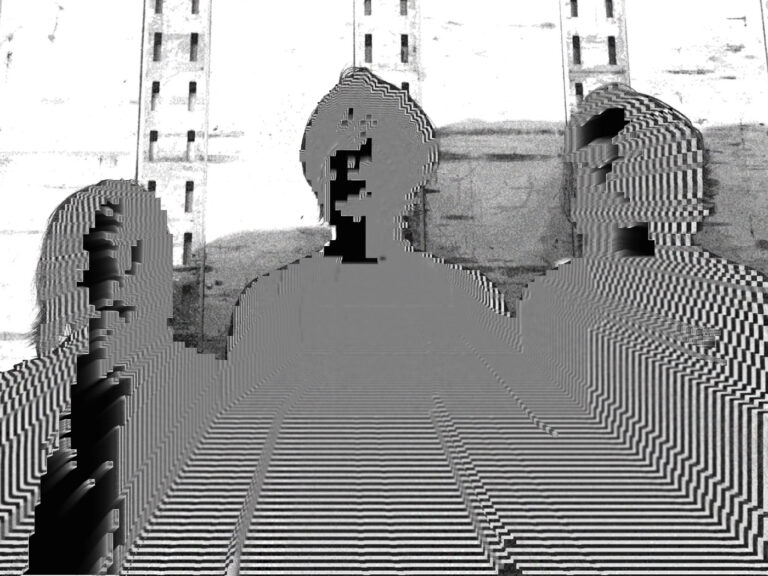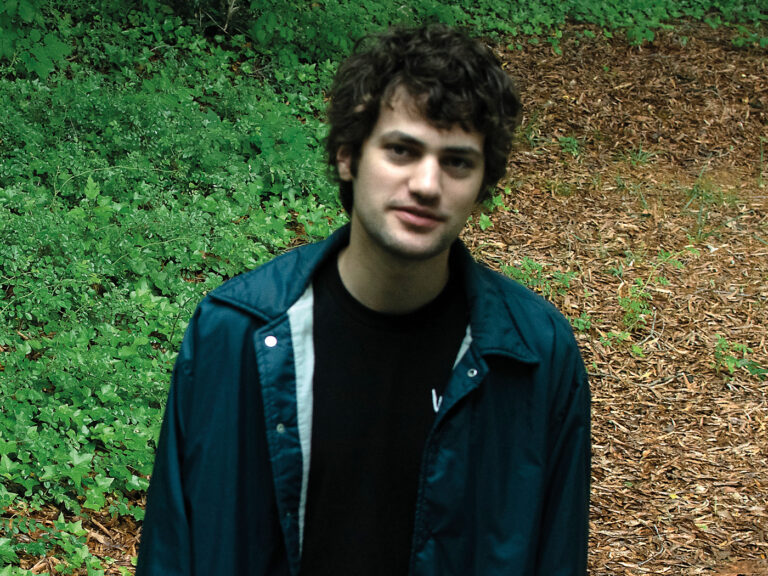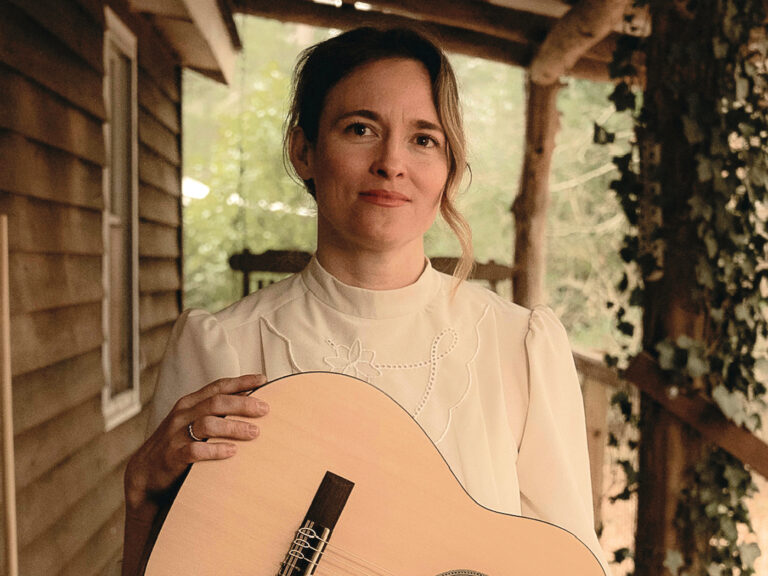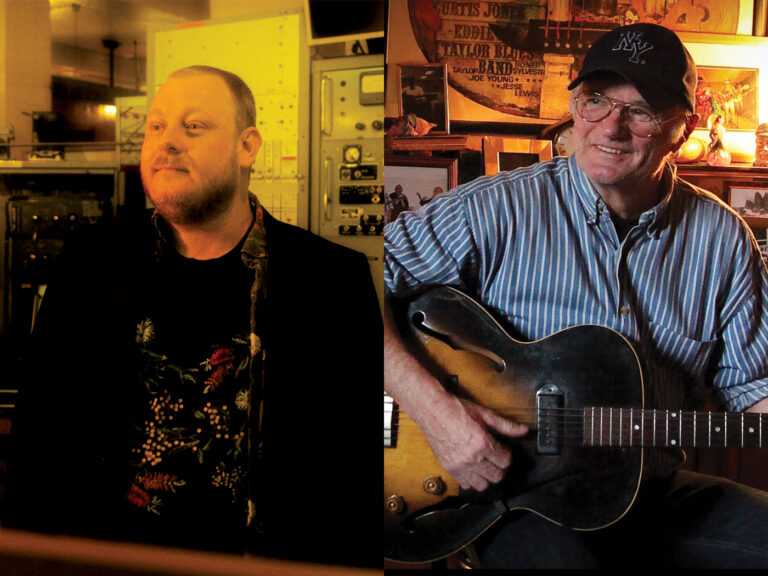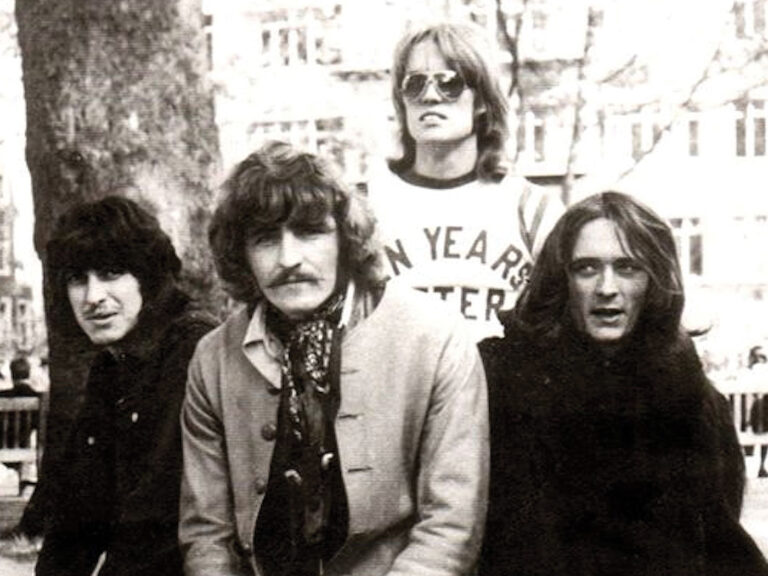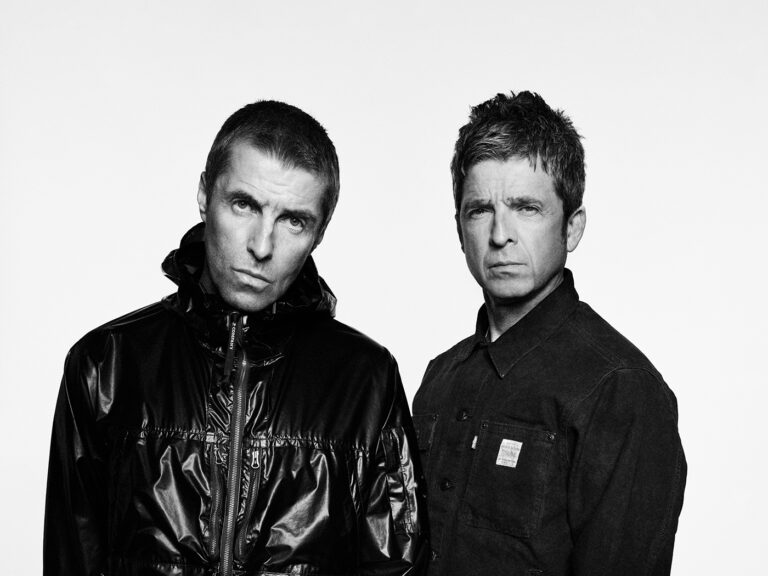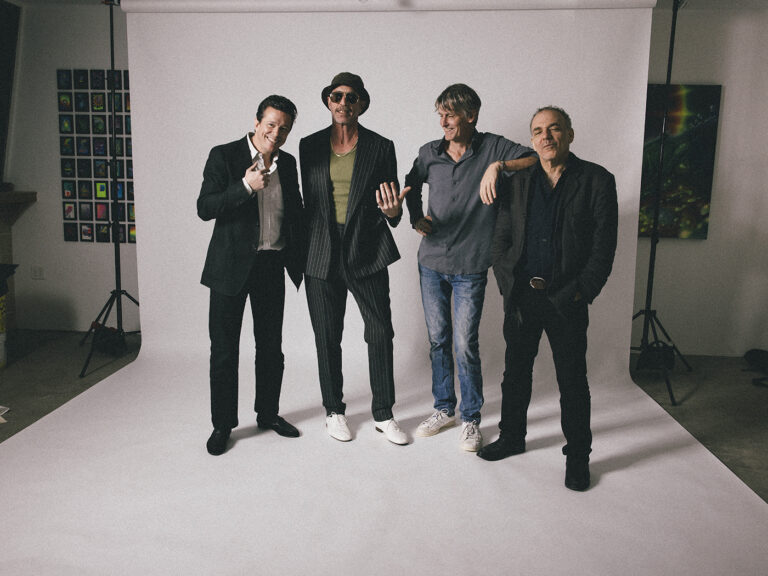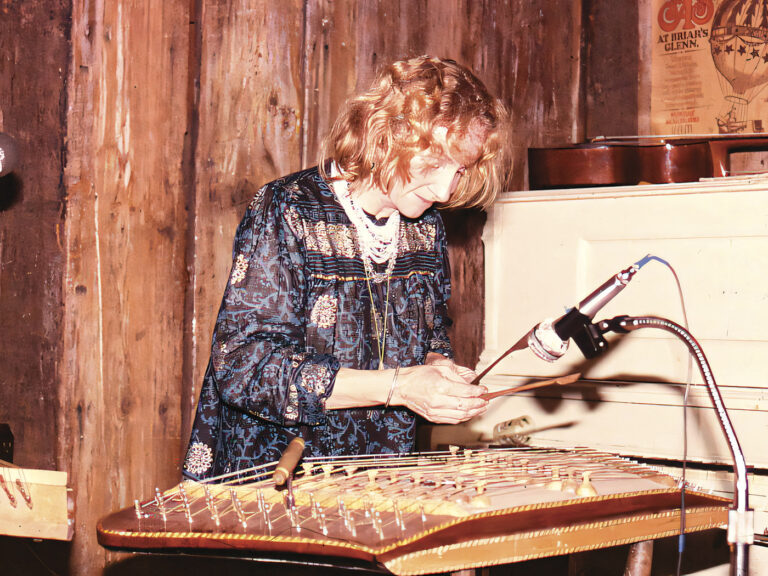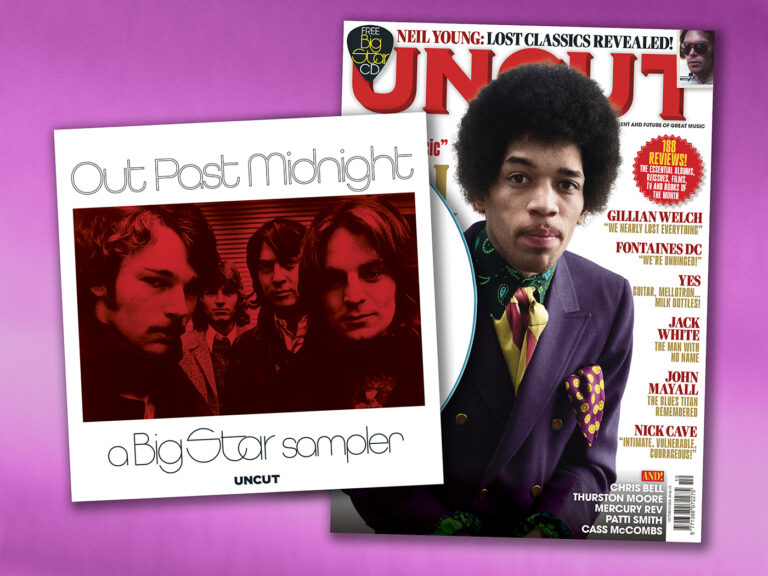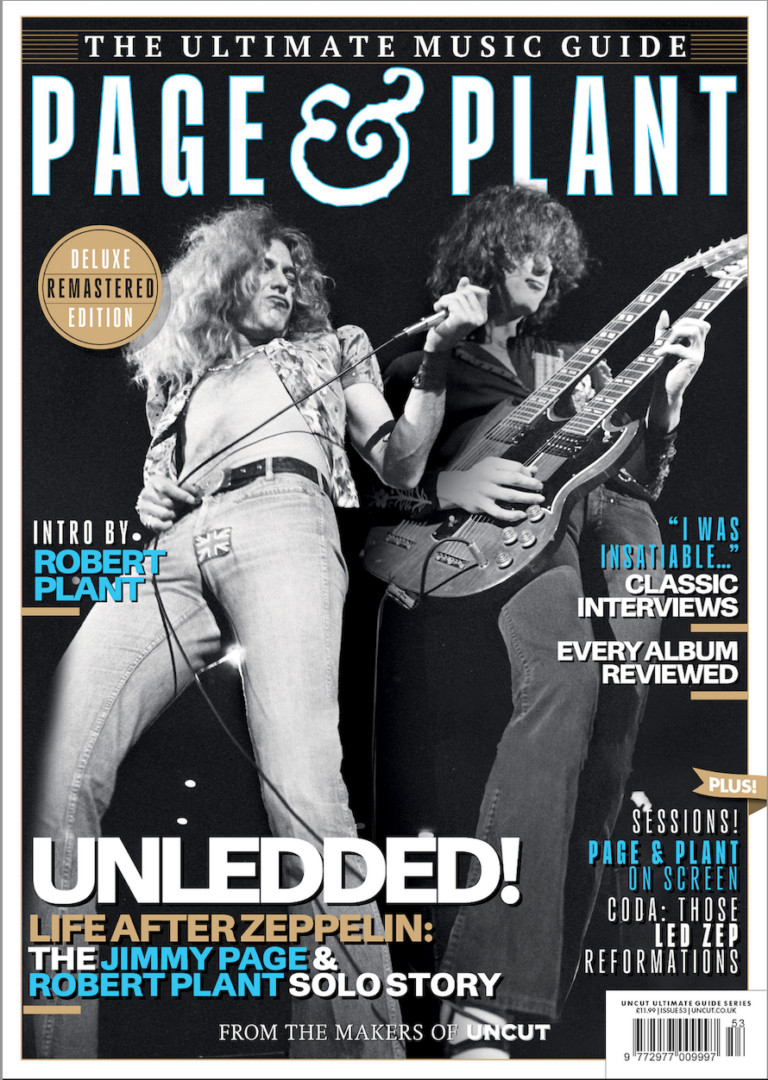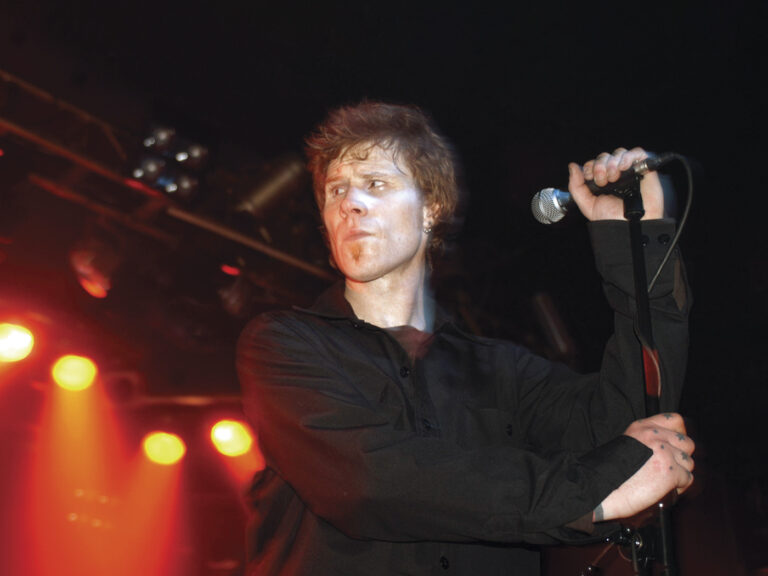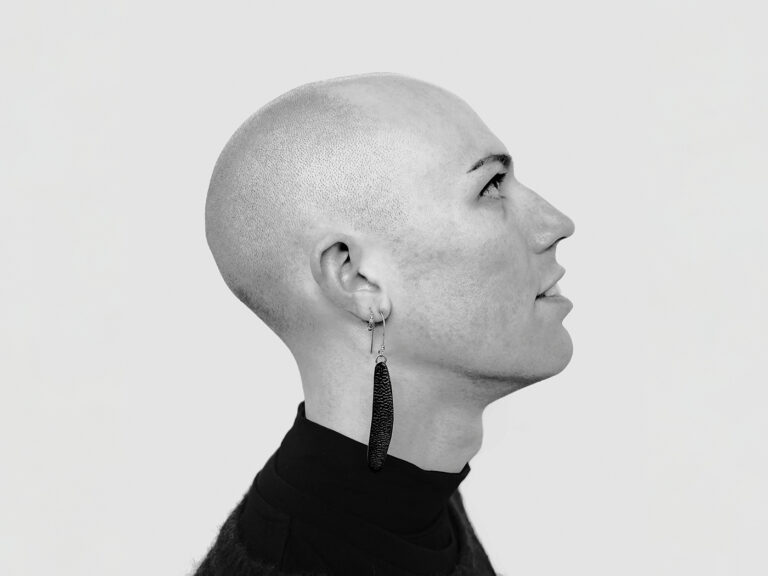HAVE A COPY SENT DIRECT TO YOUR DOOR
“Rock’n’roll,” sang Alex Chilton on 1972’s “Thirteen”, “is here to stay…” We couldn’t agree more, so it’s a real honour to present Out Past Midnight: A Big Star Sampler, a compilation of hand-picked tracks from one of the greatest bands of all time. With this CD, we’re celebrating the 50th anniversary of Big Star’s Radio City, along with the live tribute shows later this year, and marking a half-century since Chris Bell set out on his solo career with I Am The Cosmos – but really, there’s no need for an excuse to immerse yourself in Big Star.
You can read more about Chris Bell and that incredible, harrowing solo record in the same issue, dated October 2024 (it’s out in UK shops now, or available to buy online), but in the meantime spin these 10 tracks and chart the group’s journey from power-pop perfection on 1972’s #1 Record to the more unhinged, rawer grooves of 1974’s Radio City, and finally the expansive, avant-garde obliteration of Third, recorded in late ’74 and first released four years later.
We hope you dig this sampler as much as we do, whether you’re revisiting these cuts, discovering the rarities or making your first ventures into the world of Chilton, Bell and co. As the former sang on “Thank You Friends”, it’s “never too late to start…”
1 IN THE STREET
AVAILABLE ON THE CRAFT ALBUM, #1 RECORD
We kick off with perhaps the best-known Big Star track, a joyous, effervescent power-pop song sung by Chris Bell. Much like Chilton’s “Thirteen”, it finds the group looking back to their youth, the days of freedom first tasted but not yet captured: “Wish we had a joint so bad…” Under it all, masterfully arranged guitars, some neatly chiming and others phased and double-tracked, pick out the off-kilter, sugar-sweet riff and lyrical solo.
2 WHEN MY BABY’S BESIDE ME (ALTERNATE MIX, 1972)
AVAILABLE ON THE OMNIVORE SOUNDTRACK, NOTHING CAN HURT ME
Here’s an early mix of the group’s first single, a power-pop ur-text sung by Alex Chilton, which also served as the opener of #1 Record’s second side. This mix is rawer and airier than the final version, with the drums flung across the stereo spectrum; and yet this emptiness allows us to hear the sublime interlocking guitars of Bell and Chilton, sparring and taking turns to step up.
3 TRY AGAIN
AVAILABLE ON THE CRAFT ALBUM, #1 RECORD
Smack bang in the heart of the acoustic section that closes the group’s debut, “Try Again” is perhaps the Big Star song that most keenly throws forward to I Am The Cosmos, which Bell would begin two years later. With its pained, heartfelt pleas to the Lord, wall of strummed acoustics and harmonised slide guitars, there’s also more than a hint of George Harrison’s solo work here. That it stands up to that comparison is a mark of its quality.
4 YOU GET WHAT YOU DESERVE (ALTERNATE MIX, 1973)
AVAILABLE ON THE OMNIVORE SOUNDTRACK, NOTHING CAN HURT ME
A spiky highlight of second album Radio City here, recorded by the trio of Alex Chilton, drummer Jody Stephens and bassist Andy Hummel after the commercial failure of their debut and the departure of Chris Bell. The middle eight, Chilton’s howl and ensuing Stratocaster solo remain one of the most thrilling parts of the group’s catalogue, and this rare mix only serves to better highlight the raw dynamism of the trio’s sound.
5 DAISY GLAZE
AVAILABLE ON THE CRAFT ALBUM, RADIO CITY
With writing credits for the whole trio, this suite seems to capture all sides of Big Star: it begins as a morose ballad, the group unsteady, swaying and under the influence, Chilton crying out in abandonment; by the end it’s erupted into a pounding rock juggernaut, the singer having found his strength, even if it’s just to score and proclaim “you’re gonna decease!”
6 O MY SOUL
AVAILABLE ON THE CRAFT ALBUM, RADIO CITY
Their second album’s opener – only ever available in mono – gives a rare glimpse of Big Star’s heritage; they were, after all, a Memphis band, and on the strutting R&B of the verses they sound it. This is basically a live take, with Chilton’s lead and rhythm guitar part especially stunning, and the overdubbed Mellotron adding some Beatles-y psychedelia to the swampy funk.
7 KANGA ROO
AVAILABLE ON THE OMNIVORE ALBUM, COMPLETE THIRD
This floating hallucination of a song was recorded by Chilton – on 12-string acoustic and vocals – on one track, and famously given to producer Jim Dickinson as a kind of mischievous dare, to see what he could add to it. The result is sublime, with Mellotrons, guitar feedback and phased drums elevating the original recording into a symphonic, scarred masterpiece.
8 KIZZA ME (FRY ROUGH MIX)
AVAILABLE ON THE OMNIVORE ALBUM, COMPLETE THIRD
A raging rock number pledging devotion to Chilton’s girlfriend Lesa Aldridge, this opens some versions of Big Star’s third album, recorded when the group were down to the duo of Chilton and Stephens. With its psychedelic punk swirl of sawtooth guitars, cello and barroom piano, this early mix by engineer John Fry is even more manic than the final version; in the strange world of Third, then, a bona fide success.
9 TAKE CARE (FRY ROUGH MIX)
AVAILABLE ON THE OMNIVORE ALBUM, COMPLETE THIRD
After the nihilism and pain of Third – check out, of course, the crushing “Holocaust” for a really bad time – this acoustic waltz is a tonic, a tender hymn of kindness in the face of darkness. This mix is stumbling and starker, with accordion and eerie whistling foregrounded, and no sign of those romantic violins that tug on the heartstrings in the final version.
10 THANK YOU FRIENDS (FRY ROUGH MIX)
AVAILABLE ON THE OMNIVORE ALBUM, COMPLETE THIRD
The most uplifting track on Third, and perhaps in the band’s entire body of work, is even more affecting in this rawer form; before the strings, spangled guitar solo and cooing gospel backing singers, was this perfect live take. As with the previous 10 tracks here, there’s something wonderfully organic about the performance, a humanity that’s kept Big Star’s music so beloved for half a century and counting.
CLICK TO GET THE NEW UNCUT DELIVERED TO YOUR DOOR


